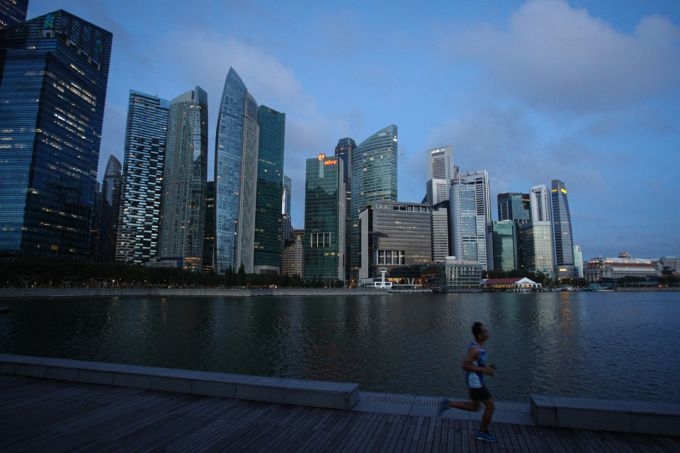Office rents may stay lower for longer

THE recovery in office rents could be a protracted one as companies review their office space needs, while rents at older buildings are expected to remain under pressure amid a flight to quality.
In the past, the finance and insurance as well as the real estate, professional services and administrative and support services (FIRE) sectors have been seen as a key driver for office demand in the Central Business District (CBD), highlighted NUS' Institute of Real Estate and Urban Studies (IREUS) deputy director, Lee Nai Jia. "The performance of the FIRE sectors had a direct bearing on the demand and rents of offices in the CBD," he said.
However, this hasn't been the case in Covid-19 times.
According to data collated by IREUS, the finance and insurance sector recorded a marginal GDP decline as the pandemic hit home. The information and communications (I&C) as well as the real estate, professional services and administrative and support services sectors recorded falls in their respective GDPs in H1 2020, and were impacted more adversely than the finance and insurance sector.
While the GDP from these sectors rebounded in H2 2020, only the finance and insurance (5 per cent) and the I&C (2.1 per cent) sectors expanded for 2020 as a whole.
Yet the rental index for the Central Area (Downtown Core and Orchard) fared worse, slumping nearly 9 per cent year-on-year in the last quarter of 2020.
Dr Lee sees several possible reasons for the weakness in the office rental index last year. For starters, landlords - particularly for older office buildings - may have found their bargaining power curtailed as the vacancy rate crept up.
And with the pandemic still raging on, firms may be hesitant to sign on the dotted line and commit to office space, given the hazy outlook. In addition, many employees continue to work remotely.
Companies could also turn to co-working spaces to give them the flexibility to scale up or down, in line with their needs.
Despite limited supply in the pipeline, Dr Lee reckons that the recovery in the rental index may take longer to materialise vis-a-vis the global financial crisis (GFC).
While he sees the buoyant I&C sector as having greater impact on office demand as it continues to grow, technology firms may choose to venture outside the CBD and set up shop near research institutes and tertiary institutes of higher learning. Meanwhile, companies in the finance and insurance sector - such as banks - are taking a hard look at their business models as they re-imagine the office of the future.
Hence, while these sectors have proven fairly resilient during the pandemic, demand from the sector could be moderate.
Dr Lee added: "Rents of older buildings are likely to be under pressure, while there may be a 'flight to quality' as firms collocate to newer buildings, but take up less space."
A somewhat different scenario played out during the GFC in 2008/2009.
The GDP for the finance and insurance sector retreated between Q3 2008 and Q1 2009 as the GFC took its toll, declining by as much as 6.5 per cent in Q4 2008 before recovering in subsequent quarters, starting from Q2 2009.
On the other hand, the I&C sector as well as the real estate, professional services and administrative and support services sector weathered the storm better than the finance and insurance sector.
Office rents in the Central Area fell 6.5 per cent quarter-on-quarter in Q4 2008 but remained depressed for a longer period than the finance and insurance sector, with green shoots only emerging in 2010.




